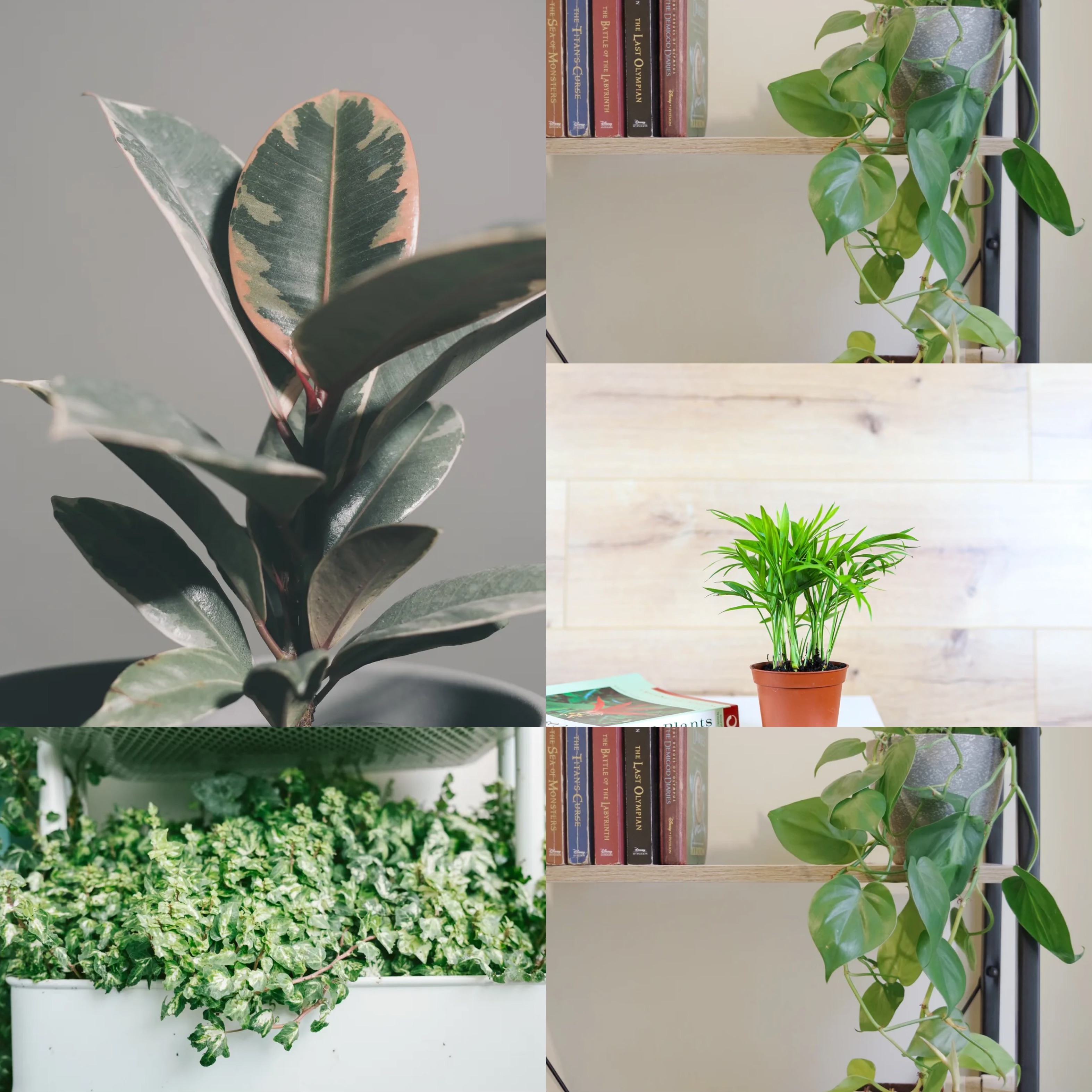Plants and flowers intended for the bedroom can do more than just liven up your space. They can improve your mood, boost creativity, reduce stress levels, increase productivity, naturally filter air pollutants, and more.
Many of us underestimate the importance of air quality. Often, insulation, paint, and furniture in our homes can contaminate our indoor air with toxins like formaldehyde and benzene. Utilizing the power of plants and flowers to purify the air in your home is essential. A plant in your bedroom can cleanse the air you breathe daily through the pores of its leaves.
In addition to their numerous benefits, bedroom plants add a beautiful decorative touch and bring significant energy to any interior. If you're looking to add a touch of greenery to your living spaces, below are some plants and flowers that can be placed in the bedroom.
SIA conducted research on the topic.
Sword Fern - Boston Fern
Also known as the Boston Fern or Sword Fern, this plant is practically a powerhouse in purifying the air and is highly durable. Its robust leaves are adapted to survive in the harsh conditions of Western Africa, where soil nutrients are scarce and rainfall is irregular. The Boston Fern is an ideal choice for the bedroom because it ranks among NASA's top 10 air-purifying plants. It is also one of the few indoor plants that convert carbon dioxide into oxygen at night (most indoor plants only do this during the day), effectively cleansing the indoor air both day and night.
Devil's Ivy - Golden Pothos
Devil's Ivy is a versatile plant suitable for all living areas and is perfect for the bedroom. It is one of the plants that purify the air, effectively filtering formaldehyde, carbon monoxide, and benzene. Taking care of it and helping it grow is quite easy. It purifies enclosed air and helps eliminate odors.
Peace Lily - Spathiphyllum
Peace lilies are excellent plants for enclosed spaces and produce beautiful white flowers. They are among the best plants for purifying the air in the bedroom. Known for their ability to filter formaldehyde, benzene, acetone, alcohol, and trichloroethylene from the air, these plants are poisonous, so remember to keep them out of reach of children and pets. To care for a peace lily, keep the soil moist and place it in an area of your home that receives moderate to low indirect sunlight.
Aloe Vera
Another plant listed among NASA's top air-purifying plants is Aloe Vera, which releases oxygen at night, improving your sleep environment. It is also one of the easiest plants to care for, as it can tolerate neglect – you can forget to water it for three weeks, and it won't mind. These succulent plants are also known for their medicinal benefits. The gel extracted from their leaves is used for burns and sunburns.
Areca Palm
Areca Palm is a tropical plant that adds aesthetic appeal to any enclosed environment with its greenery. These plants are effective at removing harmful toxins like benzene, formaldehyde, and trichloroethylene from the air. They are among the top plants for air purification. In fact, research has shown that Areca Palms are among the best plants for removing carbon dioxide from the air. These palm trees thrive when evenly moistened soil is provided and placed away from direct sunlight.
Parlor Palm
Parlor Palms grow partly or fully shaded in their native Guatemala, making them suitable for offices, shopping centers, and other enclosed spaces with little or no natural light. In fact, too much light will burn the palm leaves, so keep this plant away from bright windows in the bedroom.
Rubber Plant
Also known as the Rubber Tree, the Rubber Plant is a low-maintenance plant with striking leaves that require minimal care. It is a powerful detoxifier and air purifier. Its abundant leaves excel at absorbing significant amounts of pollutants and toxins, effectively cleansing enclosed air. Keeping it in medium to low light conditions will benefit its growth.
English Ivy
English Ivy, also known as Hedera Helix, is another climbing plant that ranks high on NASA's list of the best air-purifying plants. Hedera Helix is highly effective at removing formaldehyde, benzene, xylene, and toluene from the air. Not only do these plants help remove toxins from the air, but research also shows that they improve allergy symptoms and can help purify the air of mold and animal dander.
Philodendron
Known as the Heartleaf Philodendron, this plant is one of NASA's top air-purifying plants. It is easy to care for, making it highly preferred in living spaces. The heart-shaped leaves of this climbing plant come in several visually appealing variations and are particularly effective at filtering formaldehyde from the air. However, because this climbing plant is toxic when ingested, it should be placed out of reach of pets and children in the bedroom.
Dracaena Massangeana
The Dracaena Massangeana is a plant with air-purifying properties that can be kept in many areas and is particularly suitable for the bedroom. It is robust and long-lasting. These plants add a perfect look to any environment. Being happy in bright light, this plant will make your living space feel like it has a tree.
We spoke with physician and therapist Subhan Haciyev about his thoughts on the topic.
According to him, green plants are not only pleasing to the eye but also highly beneficial for the body: "Plants in the home and bedroom should ideally be placed where light falls. During the photosynthesis process, these plants absorb carbon dioxide and release oxygen. Oxygen is beneficial for us to breathe comfortably in the rooms where we sleep and live.
Moreover, many plants also play a significant role in purifying and filtering toxic substances in the air. Additionally, they help eliminate dryness created when we heat our rooms and have properties that humidify the room.
However, sometimes using such plants, especially in the summer months, can be very unfavorable for people with respiratory allergies (this condition, called pollen, is allergic to greenery, grass, and flowers). Their allergic reactions worsen at this time, and the harm outweighs the good."
Bütün xəbərlər Facebook səhifəmizdə














.jpg)
















 USD
USD
 EUR
EUR
 GBP
GBP RUB
RUB
